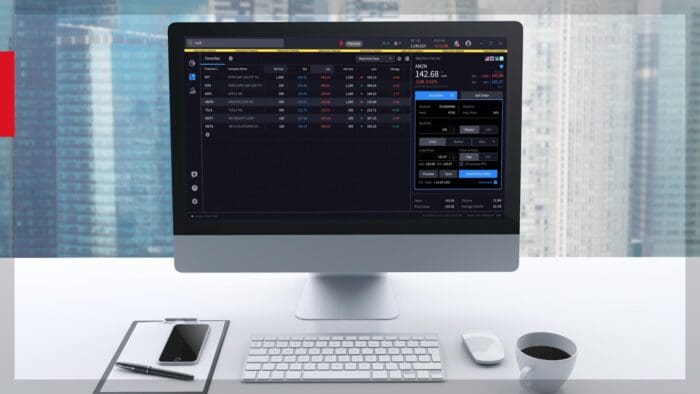AI continues to sweep across numerous industries, offering ever-evolving tools to enhance speed and efficiency. The potential uses and applications of this technology are vast, but can generative AI streamline and optimise the enhanced due diligence (EDD) process without inadvertently increasing risk?
- EDD is a vital additional risk management step where heightened risk is identified and reviewed.
- AI can optimise the EDD research process, but it is essential to adopt a low-risk approach when using this technology in the due diligence space.
- A low-risk approach must retain a core element of human oversight.
Why EDD matters
Every customer or third-party relationship has the potential to introduce risk to your organisation, and this means that due diligence to identify possible financial crime and sanctions risk – and understand exactly who you’re doing business with – is an imperative step in every business relationship.
Where heightened risk is suspected or detected, initial screening may not be enough, and EDD becomes necessary. EDD reports deliver vital information about your most critical or risky relationships and can be crucial when deciding whether to engage with a new customer or third party.
Specific instances that should trigger EDD include:
- Where the customer or third party is high risk
- Where there is high value attached to the relationship
- Where initial findings suggest that red flags may be present
Robust EDD offers additional insights that typical initial screening does not. These reports include risk-relevant information gathered from a variety of credible sources and deliver detailed background information and contextualised insights on subjects.
EDD, when executed well, helps you make informed decisions about engaging with new customers or third parties while meeting compliance and regulatory obligations.
However, the EDD research process is time-consuming and resource intensive. Rushed reports raise the risk of quality errors that could result in considerable damage to your company. It is therefore important to consider how innovation can be harnessed to conduct high-quality EDD with speed and efficiency.
AI offers a viable solution, but is there a risk attached to using AI in EDD?
Adopting a low-risk approach
All new technologies come with a degree of risk – and AI is no exception. There are, understandably, several concerns around the safe application of AI to business processes in general, and to EDD in particular.
Adopting a low-risk approach can offer EDD researchers the tools they need to work smarter, work faster and deliver more robust EDD reports quickly, but what does such an approach look like?
Essentially, a low-risk approach means taking steps to avoid common pitfalls – such as AI hallucinations and bias, which is the biggest risk when using AI.
Hallucinations are the tendency of some generative AI models to deliver incorrect information where output errors appear legitimate.
AI bias refers to results that skew the original training data or AI algorithm, leading to distorted outputs and potentially harmful outcomes. Bias can creep into algorithms in multiple ways, for example, via training data, which can include skewed human decisions or reflect historical or social inequities. Bias can also be introduced in the AI model via flawed data sampling.
So how can you streamline and optimise the EDD process using AI, without introducing more risk?
The safest approach is “grounding”, which means setting restrictions for the input of data. In the EDD process, the input provided to the AI writing tool can be grounded to research elements completed by an analyst using their existing research methodology. The AI can then simply use the collected data – that has been quality assured by human analysts – to create a summary.
The core element: human oversight
The key ingredient to minimise risk is human oversight. Where the application of generative AI capabilities simply creates a tool to augment the writing process, but analysts retain full control and accountability, risk is low.
This approach optimises the more basic elements of report construction and frees analysts to concentrate their attention on areas of greater value-add, such as analysing the collected data and distilling the insights that drive better decisions.
The benefits are many: leveraging a combination of generative AI and existing research capabilities within the report writing process boosts efficiency across an array of day-to-day tasks, such as creating executive summaries more efficiently. This approach also helps to improve writing quality and consistency across reports.
At LSEG we have adopted a low-risk approach to integrating AI into our existing EDD report processes. This conservative use of AI augments and optimises our in-house EDD capabilities, which are supported by analysts speaking 60+ languages across 200+ jurisdictions and producing tailored reports to meet business-critical needs.
By leveraging this powerful combination of leading technology and trusted human intelligence, we deliver 30, 000 EDD reports a year, enabling businesses to understand and mitigate dynamic risk without slowing the pace of business.
—
Originally Posted February 12, 2025 – AI and risk: re-imagining EDD
Legal Disclaimer
Republication or redistribution of LSE Group content is prohibited without our prior written consent.
The content of this publication is for informational purposes only and has no legal effect, does not form part of any contract, does not, and does not seek to constitute advice of any nature and no reliance should be placed upon statements contained herein. Whilst reasonable efforts have been taken to ensure that the contents of this publication are accurate and reliable, LSE Group does not guarantee that this document is free from errors or omissions; therefore, you may not rely upon the content of this document under any circumstances and you should seek your own independent legal, investment, tax and other advice. Neither We nor our affiliates shall be liable for any errors, inaccuracies or delays in the publication or any other content, or for any actions taken by you in reliance thereon.
Copyright © 2024 London Stock Exchange Group. All rights reserved.
Disclosure: FTSE Russell
Interactive Advisors, a division of Interactive Brokers Group, offers FTSE Russell Index Tracker portfolios on its online investing marketplace. Learn more about the Diversified Portfolios.
This material is not intended as investment advice. Interactive Advisors or portfolio managers on its marketplace may hold long or short positions in the companies mentioned through stocks, options or other securities.
© 2023 London Stock Exchange Group plc and its applicable group undertakings (the “LSE Group”). The LSE Group includes (1) FTSE International Limited (“FTSE”), (2) Frank Russell Company (“Russell”), (3) FTSE Global Debt Capital Markets Inc. and FTSE Global Debt Capital Markets Limited (together, “FTSE Canada”), (4) MTSNext Limited (“MTSNext”), (5) Mergent, Inc. (“Mergent”), (6) FTSE Fixed Income LLC (“FTSE FI”), (7) The Yield Book Inc (“YB”) and (8) Beyond Ratings S.A.S. (“BR”). All rights reserved.
FTSE Russell® is a trading name of FTSE, Russell, FTSE Canada, MTSNext, Mergent, FTSE FI, YB and BR. “FTSE®”, “Russell®”, “FTSE Russell®”, “MTS®”, “FTSE4Good®”, “ICB®”, “Mergent®”, “The Yield Book®”, “Beyond Ratings®“ and all other trademarks and service marks used herein (whether registered or unregistered) are trademarks and/or service marks owned or licensed by the applicable member of the LSE Group or their respective licensors and are owned, or used under licence, by FTSE, Russell, MTSNext, FTSE Canada, Mergent, FTSE FI, YB or BR. FTSE International Limited is authorised and regulated by the Financial Conduct Authority as a benchmark administrator.
All information is provided for information purposes only. All information and data contained in this publication is obtained by the LSE Group, from sources believed by it to be accurate and reliable. Because of the possibility of human and mechanical error as well as other factors, however, such information and data is provided “as is” without warranty of any kind. No member of the LSE Group nor their respective directors, officers, employees, partners or licensors make any claim, prediction, warranty or representation whatsoever, expressly or impliedly, either as to the accuracy, timeliness, completeness, merchantability of any information or of results to be obtained from the use of the FTSE Russell products, including but not limited to indexes, data and analytics or the fitness or suitability of the FTSE Russell products for any particular purpose to which they might be put. Any representation of historical data accessible through FTSE Russell products is provided for information purposes only and is not a reliable indicator of future performance.
No responsibility or liability can be accepted by any member of the LSE Group nor their respective directors, officers, employees, partners or licensors for (a) any loss or damage in whole or in part caused by, resulting from, or relating to any error (negligent or otherwise) or other circumstance involved in procuring, collecting, compiling, interpreting, analysing, editing, transcribing, transmitting, communicating or delivering any such information or data or from use of this document or links to this document or (b) any direct, indirect, special, consequential or incidental damages whatsoever, even if any member of the LSE Group is advised in advance of the possibility of such damages, resulting from the use of, or inability to use, such information.
No member of the LSE Group nor their respective directors, officers, employees, partners or licensors provide investment advice and nothing contained herein or accessible through FTSE Russell products, including statistical data and industry reports, should be taken as constituting financial or investment advice or a financial promotion.
Past performance is no guarantee of future results. Charts and graphs are provided for illustrative purposes only. Index returns shown may not represent the results of the actual trading of investable assets. Certain returns shown may reflect back-tested performance. All performance presented prior to the index inception date is back-tested performance. Back-tested performance is not actual performance, but is hypothetical. The back-test calculations are based on the same methodology that was in effect when the index was officially launched. However, back- tested data may reflect the application of the index methodology with the benefit of hindsight, and the historic calculations of an index may change from month to month based on revisions to the underlying economic data used in the calculation of the index.
This document may contain forward-looking assessments. These are based upon a number of assumptions concerning future conditions that ultimately may prove to be inaccurate. Such forward-looking assessments are subject to risks and uncertainties and may be affected by various factors that may cause actual results to differ materially. No member of the LSE Group nor their licensors assume any duty to and do not undertake to update forward-looking assessments.
No part of this information may be reproduced, stored in a retrieval system or transmitted in any form or by any means, electronic, mechanical, photocopying, recording or otherwise, without prior written permission of the applicable member of the LSE Group. Use and distribution of the LSE Group data requires a licence from FTSE, Russell, FTSE Canada, MTSNext, Mergent, FTSE FI, YB, BR and/or their respective licensors.
Disclosure: Interactive Brokers Third Party
Information posted on IBKR Campus that is provided by third-parties does NOT constitute a recommendation that you should contract for the services of that third party. Third-party participants who contribute to IBKR Campus are independent of Interactive Brokers and Interactive Brokers does not make any representations or warranties concerning the services offered, their past or future performance, or the accuracy of the information provided by the third party. Past performance is no guarantee of future results.
This material is from FTSE Russell and is being posted with its permission. The views expressed in this material are solely those of the author and/or FTSE Russell and Interactive Brokers is not endorsing or recommending any investment or trading discussed in the material. This material is not and should not be construed as an offer to buy or sell any security. It should not be construed as research or investment advice or a recommendation to buy, sell or hold any security or commodity. This material does not and is not intended to take into account the particular financial conditions, investment objectives or requirements of individual customers. Before acting on this material, you should consider whether it is suitable for your particular circumstances and, as necessary, seek professional advice.



















Join The Conversation
For specific platform feedback and suggestions, please submit it directly to our team using these instructions.
If you have an account-specific question or concern, please reach out to Client Services.
We encourage you to look through our FAQs before posting. Your question may already be covered!